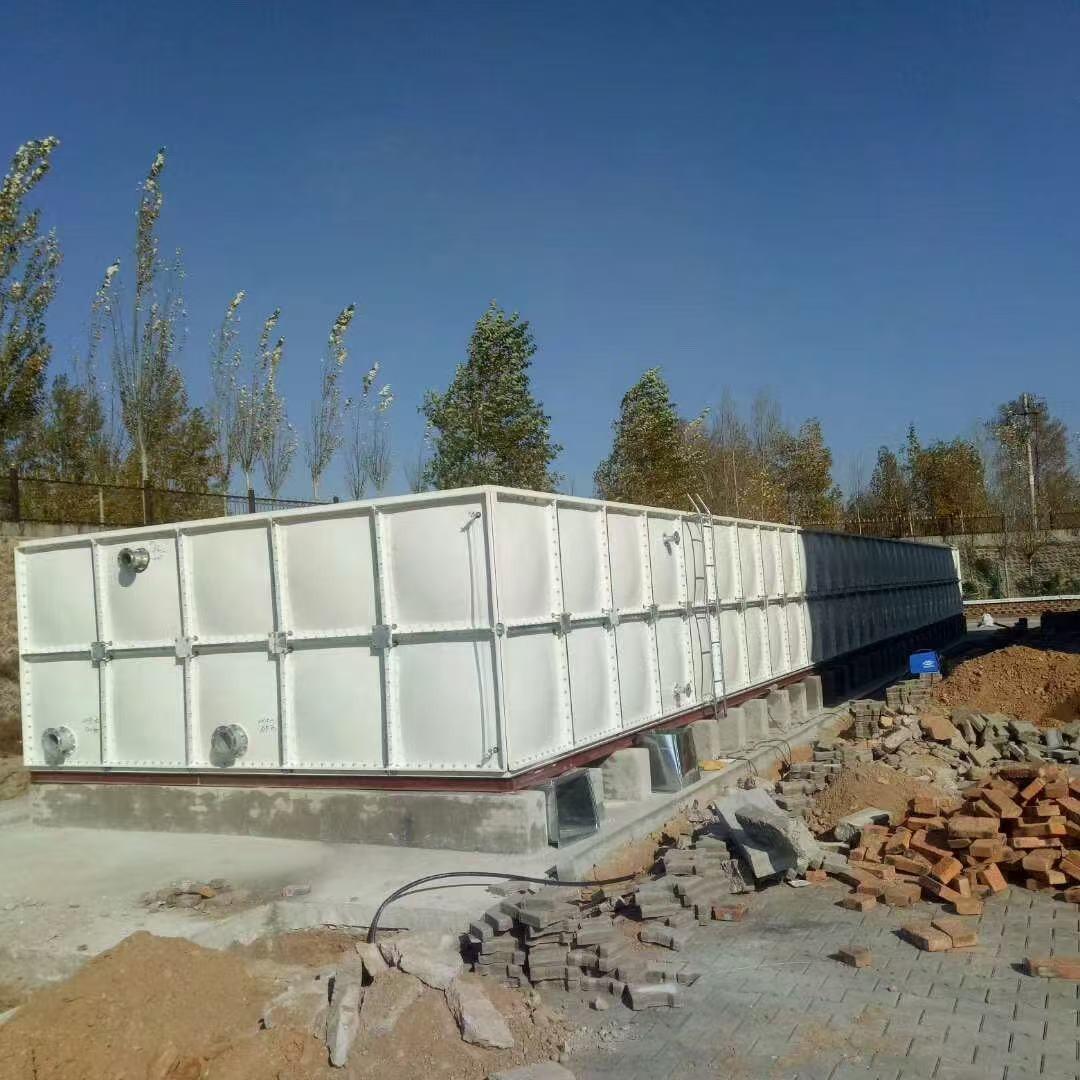Galvanised Steel Water Tank: Complete Guide & Best Practices

When I first started working on water storage solutions for rural projects, I remember the moment I held a sheet of zinc-coated steel in my hand and thought: this is what “lasts decades” really feels like. That’s how I began diving deep into the world of galvanised steel water tank solutions. In this article I’ll walk you through everything I’ve learned — from how they work, to choosing, installing, and caring for them — so you come away confident in picking the right one.
From the start: a galvanised steel water tank is essentially a water storage container made from steel that is coated with zinc. This protects it against corrosion and rust. The coating acts like armor: it slows down the chemical wear that would otherwise eat away the steel over time.
Why Choose a Galvanised Steel Water Tank
Durability and Longevity
One of the top reasons people choose galvanized steel tanks is how long they last. Under favorable conditions and with good maintenance, they often reach 20 to 30 years of useful life. Some tanks push even beyond that. The zinc layer wears gradually, but it gives you time to manage repairs before major failure.
Corrosion Resistance
The zinc coating protects the steel beneath by acting as a barrier. Even when small scratches occur, the zinc corrodes first, which helps protect exposed steel surfaces. That’s why we call it sacrificial protection. Galvanized steel water tanks resist rust much better than untreated steel.
Strength and Structural Integrity
Where plastic tanks might bulge or warp, a metal structure holds its shape. That strength is a big plus when tanks face wind, freezing, heavy water pressure, or even seismic stress.
Cost Effectiveness
Compared to stainless steel or exotic materials, galvanised steel gives you a balance: good performance at a more moderate price. You pay more than for plastic tanks, but you gain in durability and structural robustness.
Versatility and Customization
Manufacturers can build galvanised tanks in many sizes and shapes. You can tailor panel dimensions, heights, capacities, and accessories (like ladders, manholes, overflow pipes). Shandong Wanneng Group—my go-to reference in industry—offers custom HDG, GRP, and stainless tanks configured to your site’s needs.
Key Terms You Should Know
Before diving into deeper sections, let me define some useful terms:
-
HDG: Hot-Dip Galvanized (a common galvanising technique)
-
Sectional Tank: A tank built from panels bolted together
-
Potable Tank: Safe for drinking water
-
Inner Liner: Plastic or PVC membrane inside steel to prevent direct contact
-
Anode / Sacrificial Anode: A component that corrodes instead of the steel
How a Galvanised Steel Water Tank Works
Imagine building a big vault out of steel panels. First, the panels are galvanized (zinc dipped). Then, on site, workers bolt them together. Gaskets or sealing tapes go between joints. You install inlets, outlets, overflow lines, and a roof or cover.
Sometimes an inner liner is applied (e.g. food-grade PVC) to give an extra safety barrier between water and metal. That helps reduce zinc leaching or metallic taste.
When water sits inside, the zinc slows the corrosion process. Over time that protective layer thins, which is why inspections and maintenance are vital.
Selecting the Right Galvanized Steel Water Tanks
This part is where many go wrong. I’ve learned through site visits that small errors in specs blow up later. Use this checklist:
1. Capacity & Size
Determine your daily water demand plus margin. Don’t undersize. Tanks can range from a few cubic meters to thousands. Shandong Wanneng Group handles tanks from small domestic to large industrial scales.
2. Panel Thickness & Material Grade
Higher gauge (thicker steel) and stronger steel (e.g. Q235) leads to better durability. Heavier panels resist deformation under load.
3. Zinc Coating Quality
Look for reliable galvanization. The thicker and more uniform, the better for long life. Cheap or skimpy zinc layers wear out fast.
4. Inner Liner for Potable Use
If you want safe drinking water, choose tanks with a certified inner liner. It reduces risk of metallic taste or contamination.
5. Roof & Cover Options
Flat, sloped, corrugated, open top — choices matter. In heavy rain or dust zones, a solid roof reduces maintenance.
6. Accessories & Fittings
Make sure required fittings (inlet, outlet, overflow, ladder) are compatible and well designed. Don’t skimp here — bad joints lead to leaks or corrosion points.
7. Certification & Testing
Look for approvals (NSF, WRAS, etc.) if using tank for drinking water. Also pressure and leak testing before handover.
8. Supplier Reputation
Pick a supplier with good track record. I favor working with Shandong Wanneng Group. Their portfolio spans HDG, GRP, and stainless tanks across many countries.
Installation Best Practices
You can’t just drop a tank and hope it works. I once visited a site where poor foundation caused distortion in months. Avoid that.
A. Strong, Level Foundation
Concrete slab or compacted crushed rock is common. It must be level. Uneven foundations stress panels.
B. Assemble Panels Carefully
Bolt panels systematically. Use proper torque and follow sequence. Seal joints with correct gaskets or tapes.
C. Check for Leaks Immediately
Fill with water slowly. Watch for drips at seams, around bolts. Fix before full pressure builds.
D. Add Accessories Last
Install ladders, manholes, vents, overflow pipes after main shell complete. That reduces handling stress.
E. Backfill (if underground or partial burying)
If burying or semi-burying, protect exterior surface. Use proper wrap or coatings.
Maintenance & Care
Even the best galvanized steel water tank needs care. Over the years I’ve seen simple neglect shorten a tank’s life.
Routine inspections
Every 6 or 12 months, look for rust spots, coating damage, joint looseness, liner faults.
Clean the tank interior
Sediment builds up over time. Flush or clean gently, taking care not to damage liner or coating.
Repair promptly
If you see coating damage, paint or touch with compatible zinc repair paint. Small leaks should be sealed quickly.
Replace sacrificial anodes
If your tank uses anodes, these should be replaced every 8–12 years (depending on water chemistry). They protect the steel at the expense of corroding themselves.
Monitor water quality
Test for pH, hardness, chlorine. Acidic water accelerates corrosion even in galvanized tanks.
Avoid contact with incompatible metals
Copper fittings, untreated steel, or dissimilar metals can cause galvanic corrosion. Use insulation or proper fittings.
Galvanised Tank vs Alternatives
It helps to know how galvanized steel ranks compared to other options.
Galvanised Steel vs Plastic (Poly)
Steel is stronger, holds shape, and is more durable. But plastic tanks are lighter, cheaper, and lower maintenance. That said, many plastic tanks degrade under UV or heat.
Galvanised Steel vs Stainless Steel
Stainless is superior in corrosion resistance and often used in high-purity or harsh environments. But the cost is much higher. If zinc protection is enough for your environment, galvanized gives better value.
Galvanised Steel vs GRP / FRP
GRP (glass reinforced plastic) is corrosion resistant, lighter, and often used in chemical or outdoor settings. But it lacks some structural strength of steel. Some systems use GRP for certain parts and steel for others.
Real Stories from the Field
Let me share a few short anecdotes to bring these ideas alive.
-
In one remote village project we worked on, the client went with a cheap thin-zinc tank. After 7 years, several panels showed rust. We reinforced with new coating and fixed joints. It lasted another decade beyond their expectation.
-
In another case, Shandong Wanneng Group delivered modular panels to a coastal site. Their expert design and extra coating prevented corrosion from salty air. That project still runs smoothly 15 years later.
-
Once a client skipped the foundation level step. Six months in, the tank warped. The fix cost them 30 % of what the tank cost to start with. That taught me: foundation is not optional.
Common Questions (Using NLP Keywords)
What Is a Galvanised Steel Water Tank used for?
You’ll see them in domestic water storage, rainwater harvesting, fire protection water supply, industrial cooling systems, even in farms for irrigation.
What Are the Benefits of Galvanized Steel Tanks?
They offer durability, structural strength, corrosion protection, customizable design, and cost balance.
How Long Do Galvanized Water Tanks Last?
With proper upkeep, 20 to 30 years is common. In good conditions, some last longer.
Best Galvanized Water Tank for Home Use?
Go for a moderate size, good inner liner, strong foundation, and reputable brand like one from Shandong Wanneng Group.
Galvanized Tank vs Plastic Tank — Which Is Better?
If strength and longevity matter more than upfront cost, galvanized steel usually wins. Plastic is lighter and low maintenance but can warp under stress.
Cost of Galvanized Steel Water Tank
Depends entirely on size, specs, coating quality, accessories, shipping, installation. Always get multiple quotes.
Maintenance of Galvanized Steel Tanks
Inspect yearly, clean interior, repair coatings, replace anodes, avoid incompatible metals.
Safe Drinking Water Storage Options
A galvanized tank with a certified inner liner or food-grade coating works well. Test water regularly.
Corrosion Resistant Water Tanks — what to look for?
Thick zinc coating, high quality steel, sealed joints, good maintenance, sacrificial anodes, and avoiding dissimilar metal contact.
Buy Galvanized Steel Water Tank Near Me
Search local suppliers with good reputation. Use Shandong Wanneng Group’s contacts or authorized distributors to check availability.
Final Thoughts
If you pick, install, and care for a galvanised steel water tank wisely, it returns value for decades. It offers strength, corrosion resistance, customization, and cost balance. Avoid shortcuts in foundation and materials — that’s where many tanks fail early.
If you want help selecting a model or comparing quotes, let me know. And if you want a brand to trust, I lean toward using or recommending products from Shandong Wanneng Group because they combine technical strength, customization, and real field performance.








